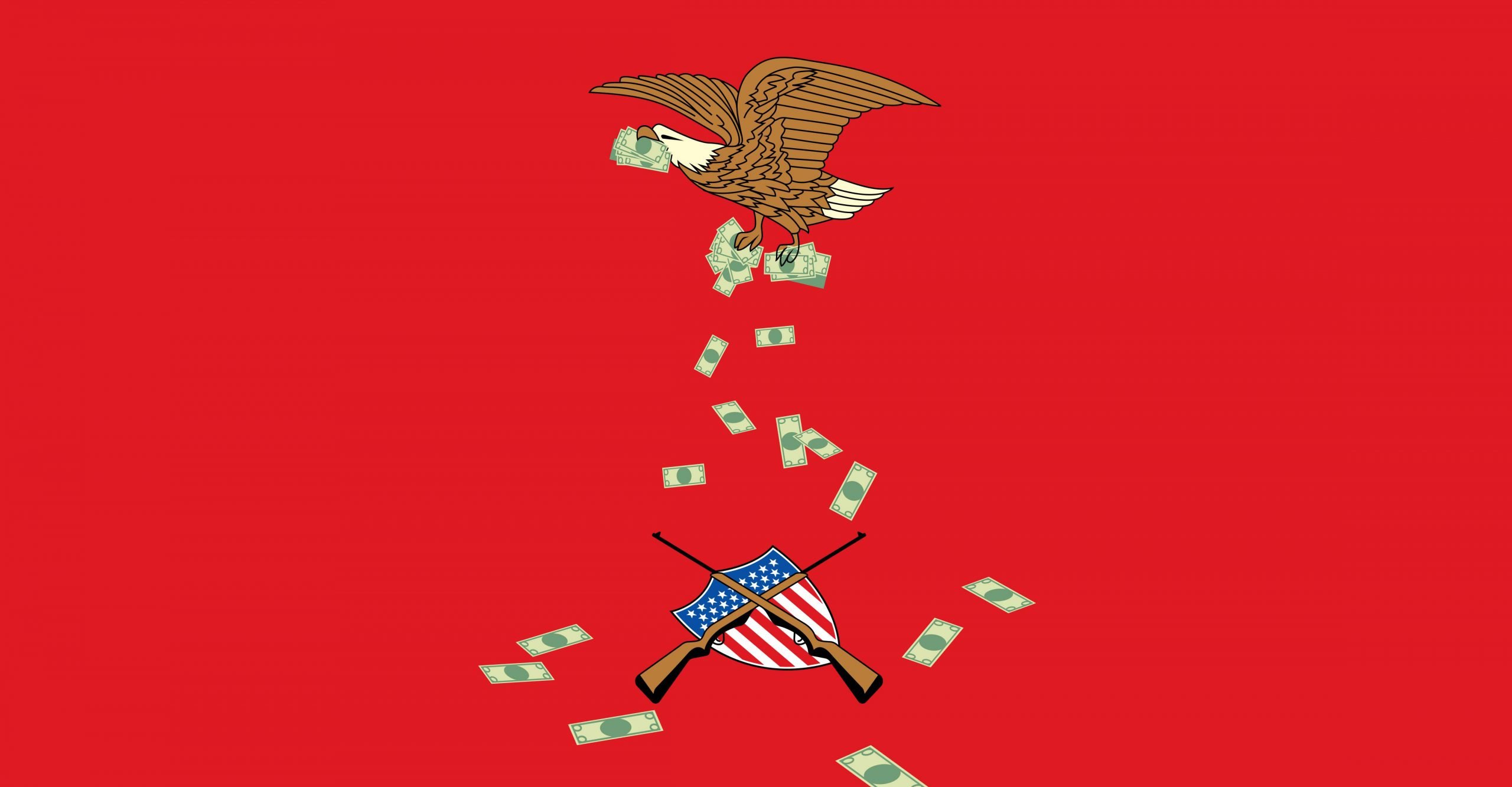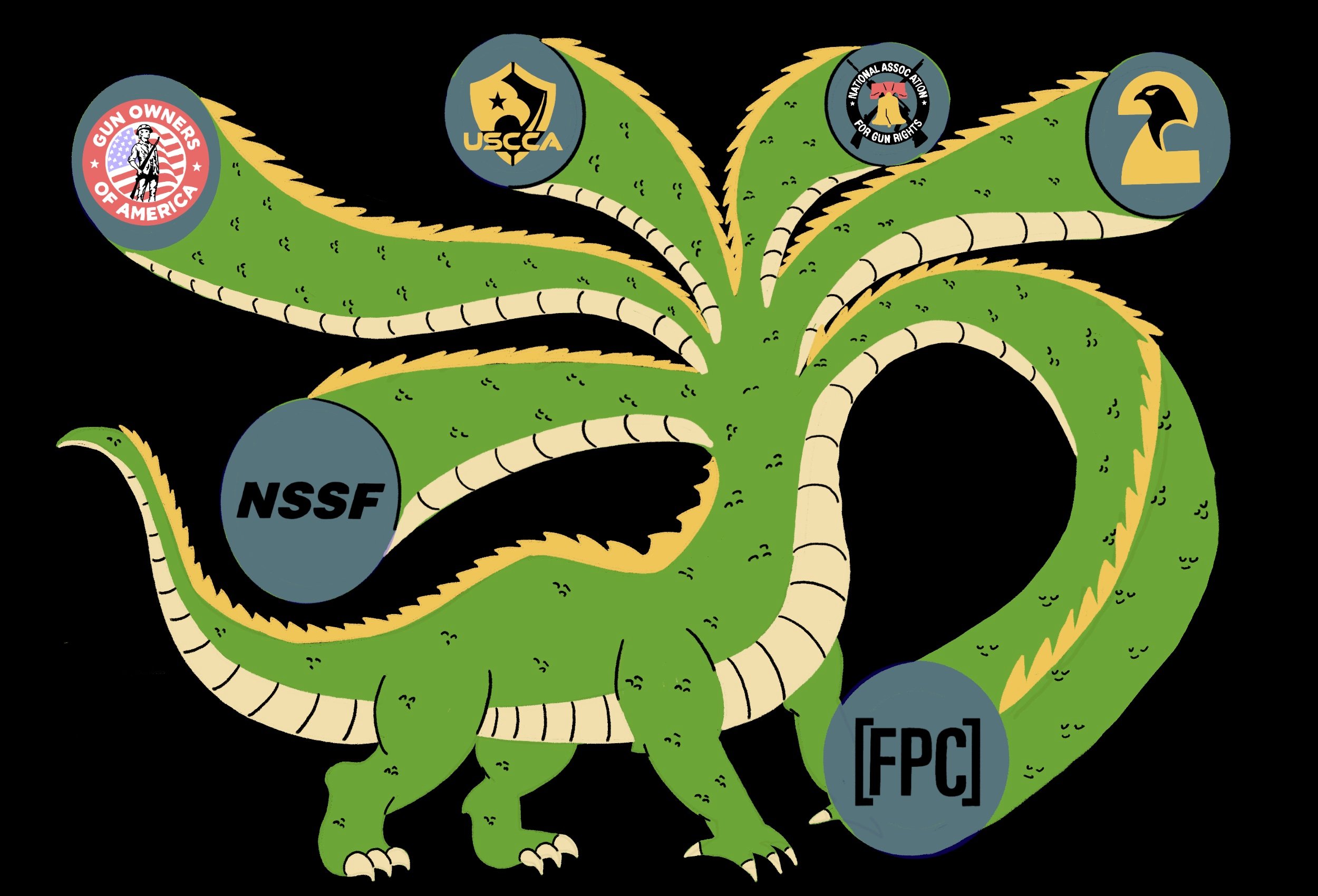The National Rifle Association’s annual convention was consumed by infighting on Saturday, after its president, Oliver North, was ousted a week after a joint investigation by The Trace and The New Yorker exposed hundreds of millions of dollars in questionable payments to NRA executives, contractors, and vendors. Adding to the scrutiny of the gun rights group, The New York Times reported that the New York attorney general, Letitia James, has opened a formal investigation into the group’s financial practices, and is looking into whether it should retain its nonprofit status.
The convention began with Richard Childress, the NRA’s first vice president, reading aloud a letter from North, whose role in the organization is largely ceremonial, to hundreds of members gathered at the Indiana Convention Center in Indianapolis. In the letter, North said he would not seek a second term as president and that he had created a committee to examine the allegations of financial mismanagement surfaced by the media. “If true, the NRA’s nonprofit status is threatened,” North’s letter said. “There is a clear crisis that needs to be dealt with immediately and responsibly so the NRA can continue to focus on protecting our Second Amendment.”
Later, members had a raucous debate over a resolution calling for the resignation of Wayne LaPierre, the NRA’s longtime executive vice president and public face. The resolution, put forward by a member from Pennsylvania, accused LaPierre of having “squelched and ignored” issues raised nearly 20 years ago regarding Ackerman McQueen, an advertising and public relations firm that has shaped the gun group’s messaging for years and was paid $40 million in 2017 alone. The resolution warned that the NRA’s “highly suspect” financial practices could result in its complete dismantling.
The intensity of the debate over the resolution appeared to expose deep divisions among rank-and-file members and ratcheted up pressure on LaPierre, who is credited with transforming the organization into a powerhouse over the last three decades. Members spent nearly an hour arguing over whether the NRA’s financial woes should be discussed in public. “The lifeblood of this organization is on the line,” said Marion Hammer, an influential Florida-based NRA lobbyist and former president. “We are under attack from without; we do not need to be under attack from within.” Members then voted to keep the debate private and send the resolution to the board, which is scheduled to meet on Monday.
On Friday, The Wall Street Journal reported that LaPierre had told the group’s board that North was threatening to release a letter containing “a devastating account of our financial status, sexual harassment charges against a staff member, accusations of wardrobe expenses and excessive staff travel expenses.” Much of the controversy has centered on the NRA’s close relationship with Ackerman McQueen. In a move that surprised many members, the NRA sued Ackerman McQueen earlier this month, accusing the firm of concealing financial information.
North’s ouster added an element of intrigue to what is normally a weekend of firearm-themed festivities. When the convention kicked off on Friday morning, attendees browsed acres of guns and accessories spread out across the exhibition floor. Later, they ventured across the street to the Lucas Oil Stadium, where conservative politicians and celebrities, including President Donald Trump, delivered a series of speeches. Trump drew cheers when he announced that the United States was withdrawing from the landmark U.N. Arms Trade Treaty, an agreement signed by then-President Barack Obama in 2013 that aims to regulate the sale of weapons between countries. Chris Cox, the NRA’s top lobbyist, had derisively labeled the agreement the “United Nations Arms Ban Treaty.”
When members assembled in the convention center’s second-floor ballroom to hear from their leaders on Saturday morning, tensions were visible. LaPierre walked on stage to a standing ovation and took a seat at the table with his fellow executives. North’s decision to skip the meeting left the chair next to LaPierre empty. LaPierre remained staid as Childress read North’s letter. LaPierre then walked up to the lectern and hewed to familiar talking points, ignoring North’s resignation. Wearing a blue suit and tie, LaPierre touted the NRA’s success in rolling back gun restrictions and resisting efforts by state officials, including the governor and attorney general of New York, to enact gun control measures. “We are in the fight for our political lives here at the National Rifle Association,” LaPierre said, as the crowd applauded. “But I promise you, in the spirit of true patriots, we are fighting back.”
The subsequent debate over LaPierre himself was impassioned, with members who opposed him shouting from the back of the room, “We demand to be heard!” When the NRA’s secretary and general counsel moved to send the resolution calling for LaPierre’s ouster to the board so that it could be discussed in private, citing ongoing litigation and an internal review, the proposal elicited boos from the crowd. “If this is indeed an issue that should not be discussed in front of the media, perhaps we should ask the media to leave the room,” Adam Kraut, a gun rights advocate who has become vocally critical of LaPierre, told the board. “Because, last I looked, the sign outside said this was a meeting of the members.” After roughly 45 minutes of debate, the members passed the resolution referring the issue to the board.
Throughout the convention, NRA members said they remain deeply suspicious of the news media and see investigations by Democratic officials in New York state as biased. Beth Dragoo, who has belonged to the NRA for more than 40 years, said, “I tend to want to dig into the facts for myself, and find out through the organization what’s going on rather than trying to think that someone who doesn’t belong to the organization could possibly know more.”


